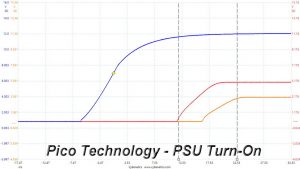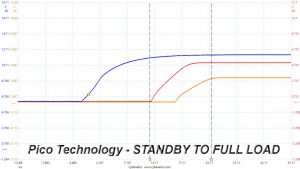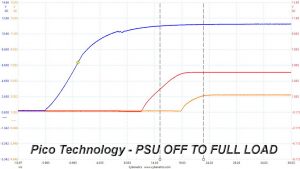Protection Features
Our protection features evaluation methodology is described in detail here.
|
Protection |
|
|
OCP |
12V: 90A (127.12%), 11.994V |
|
OPP |
1095.7W (128.9%) |
|
OTP |
✓ (180°C @ 12V board) |
|
SCP |
12V: ✓ |
|
PWR_OK |
Proper Operation |
|
NLO |
✓ |
|
SIP |
Surge: MOV |
The OCP and OPP triggering points are reasonable set, while the 5VSB rail is set rather high at 180% of its nominal output. Nonetheless, we don't measure increased ripple and the voltage is within the ATX spec.
As expected the over temperature protection's triggering point is set high, providing enough room for a prolonged passive operation. After all the +12V parts, which are stressed the most, are highly tolerant to increased temperatures. Finally, the power ok signal is accurate and there is short circuit protection on all rails.
DC Power Sequencing
According to Intel’s most recent Power Supply Design Guide (revision 1.4) the +12V and 5V voltages must be equal or greater than the 3.3V rail’s output at all times, during the power-up and normal operation. For our first measurement, we turn the unit off and switch it back on without any load in any of the rails.
In the second test, we set the PSU to standby mode, dial full load and start it afterwards. In the last test, while the power supply is completely switched off (we cut off the power or switch the supply off through its power switch), we dial full load before restoring power.
The results are perfect since in all cases the 3.3V rail's voltage is lower compared to the rest two rails and the peaks are within the 20ms range that the ATX spec requires.
 KitGuru KitGuru.net – Tech News | Hardware News | Hardware Reviews | IOS | Mobile | Gaming | Graphics Cards
KitGuru KitGuru.net – Tech News | Hardware News | Hardware Reviews | IOS | Mobile | Gaming | Graphics Cards




